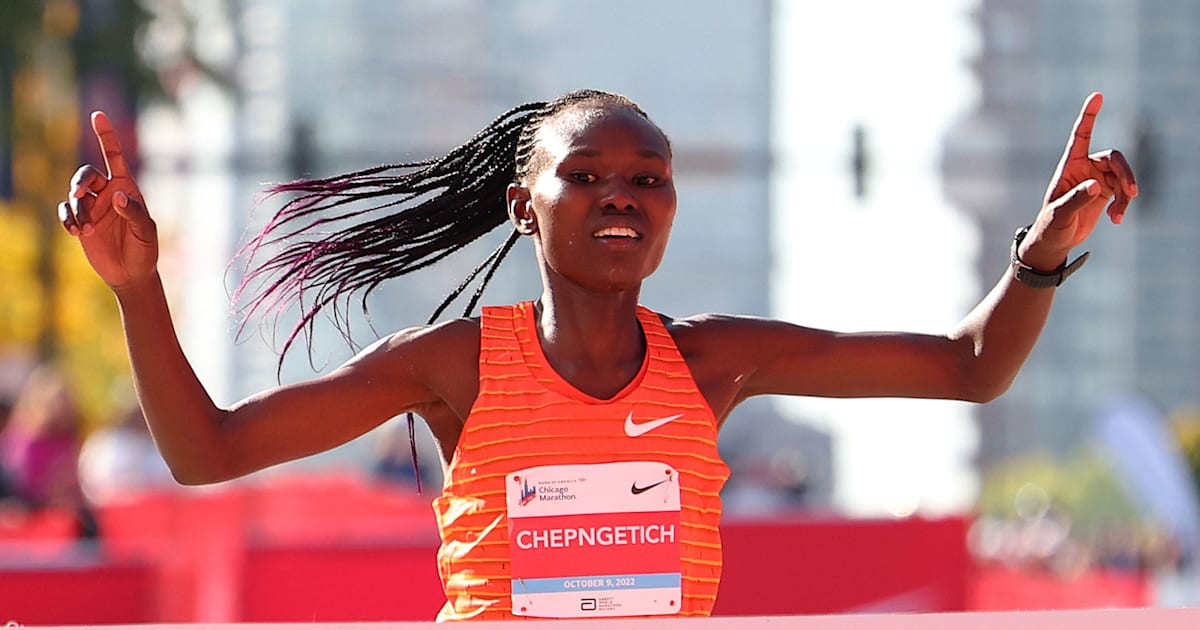Let’s face it, we could all use a good laugh these days. And thankfully, comedy has delivered, with a mix of the bold, the bizarre and, yes, sometimes the delightfully dark.
Once again, Variety is celebrating the comedy voices that made the past year a little brighter (and weirder). From icons like Conan O’Brien and Amy Poehler, to scene-stealers like Richard Kind and “The Righteous Gemstones” cast, to podcast powerhouses like Marc Maron, Bowen Yang and Matt Rogers, this year’s list is as eclectic as ever.
Here’s our roundup of the funniest folks who kept us laughing in all the right (and wrong) ways.
-
Brooke Averick and Connor Wood

Image Credit: Courtesy Images “Brooke and Connor Make a Podcast,” hosts and performers
Thanks to countless viral moments — like the now-iconic “I have purse” — “Brooke and Connor Make a Podcast” keeps gaining traction. Originally more structured, Averick and Wood discovered their magic lies in keeping it casual. “We used to be really focused on fitting into the mold of other podcasts,” Averick says. “Now we have kind of just let that go and say anything that comes into our heads. I think that’s when you get the moments that reach people, like when we just start speaking gibberish.” Their shared language of inside jokes and quirky phrases has spilled into viral TikToks and everyday slang. The podcast’s popularity has also opened creative doors. “We’re both very lucky that the podcast has given us the opportunity to explore different forms of comedy,” says Averick, shouting out Wood’s current stand-up tour and her upcoming rom-com novel. “We’re just really excited to grow in those spaces.”
-
Nate Bargatze


Image Credit: Paul Mobley “Big Dumb Eyes World Tour” performer
Bargatze has long enjoyed popularity in America’s heartland with his laid-back, profanity-free comedy. Now, after a string of successful standup specials and his current “Big Dumb Eyes World Tour,” everybody wants to be in the Bargatze business, from “SNL” (he’s hosted twice) to Tri Star Pictures, which greenlit his first big screen starring vehicle, the “Mr. Mom”-esque comedy “The Breadwinner.” Next up: hosting the Emmys in September. “It’s a matter of just picking what I need to stay in the world that I do best,” Bargatze says of crafting his Emmys material. “When I venture out is when stuff can go wrong.”
-
Catherine Cohen and Pat Regan


Image Credit: Courtesy Images “Seek Treatment With Cat & Pat” hosts, performers
The duo behind the hit comedy podcast “Seek Treatment” have had a packed year. Regan’s been busy writing for HBO Max’s “Hacks,” producing Prime Video’s “Overcompensating” and Netflix’s “Nobody Wants This.” Meanwhile, Cohen popped up in Hulu’s “Only Murders in the Building,” Netflix’s “Sirens” and dropped both a comedy special and an album. Their podcast continues to thrive with memorable guests, many of them friends. “We both would always rather have on someone we’re friends with or someone we think is funny,” says Regan. “We just want to have fun doing it and that’s why it’s still such a good time,” adds Cohen. Looking ahead, Regan is working on a creative nonfiction book, and Cohen appears in Joachim Trier’s “Sentimental Value.” “The more we’re doing this, the more we learn what a miracle it is to make anything,” Cohen says. “We get more and more grateful the more opportunities we get.”
-
Comedy Gives Back charity


Image Credit: Courtesy Images Zoe Friedman, Amber J Lawson, Jodi Lieberman co-founders
Three comedy chicks walked into a bar and asked, “Can we change the world through comedy?” And that’s exactly what this trio set out to do. The nonprofit charitable organization devoted to creating a safety net for comedians in need support the comedy community through financial crisis relief, mental health and chemical dependency treatment. “This year, we jumped into action dedicating our January fundraiser Alt Comedy All Stars to support wildfire relief,” they say. “Laughter is more than a punchline; it’s primal. Today, it remains a vital force for healing, empathy, and belonging. In dark times, comedy doesn’t just entertain — it unites.”
-
“The Daily Show” news team


Image Credit: Courtesy of Comedy Central Josh Johnson, Troy Iwata and Grace Kuhlenschmidt
“The Daily Show” trio of correspondents consistently delivers the perfect cocktail of sharp social commentary and laugh-out-loud punchlines. In a crowded comedy field, they manage to break through with wit and heart. Johnson credits the show with completely reshaping his creative path: “Besides the opportunities it has afforded me professionally, it has transformed how I approach comedy, politics, and sharing ideas. I wouldn’t be the writer, performer, or creator I am without the show.”
He says that the real challenge in covering politics with a comedic eye is breaking down an idea and making sure it is really understood: “In my opinion, everything is funnier when there is some shared knowledge about it. Jokes can go further and deeper when we all know what we’re talking about. That same thing that makes the job difficult is what makes it fun, though.”
For Iwata, the goal is always to lighten the emotional load: “I would hope that what we do gives people something they need, whether it’s a small escape into laughter or that change in perspective from doom to ridiculousness, it’s easier to process something when it’s ridiculous and funny, it scares you less. My biggest challenge is my desire to make sure what I do brings people together as opposed to aiding the divisiveness in our community. I know our show tends to lean left, most art naturally does, but I like to think we do a great job of making fun of everyone and hopefully that’s a little reminder that we’re all human and have way more in common than not.”
Kuhlenschmidt says the show has changed her life in delightfully unexpected ways: “My demographic of getting recognized used to be primarily 20-somethings, and now hot dads in Fort Greene know who I am. It’s a dream come true. I mean that so sincerely.”
-
“Deli Boys”


Image Credit: Bexx Francois; Elisabeth Caren; Storm Santos; Jai Lennard Asif Ali — actor
Poorna Jagannathan — actor
Abdullah Saeed — creator, showrunner, executive producer
Saagar Shaikh — actorA Hulu crime comedy about first-gen Pakistani immigrants in Philadelphia who unwittingly become drug kingpins? Showrunner Saeed, and titular stars Ali and Shaikh make it work with Jagannathan as the “Boys” auntie, who clamps down on her juicy queenpin clad in bold animal print — she steals almost every scene. “I would like to see more big swings in concept and character,” says Saeed. “I believe comedy is in a slump because every platform is driven by its own idea of what has been working informing what will work in the future. But comedy doesn’t work that way. You can’t predict what will be funny next based on what’s funny now. You have to take risks, and that seems to be a dying trend.”
-
Andrew DeYoung


Image Credit: WireImage “Friendship” writer and director
DeYoung brought outré sketch comedian and “I Think You Should Leave” star Tim Robinson to the big screen, pairing his unique brand of cringe comedy alongside Paul Rudd in the year’s most uncomfortable movie, “Friendship.” DeYoung wrote and directed the comedy, which was a perfect distillation of Robinson’s unique style, and the duo are continuing their collaboration on “The Chair Company,” Robinson’s upcoming HBO series on which DeYoung is a director. Considering the success of “Friendship,” DeYoung says he hopes that it “encourages more financiers, producers and execs to trust the filmmakers to make the most specific thing possible.”
-
Amelia Dimoldenberg


Image Credit: Annie Reid “Chicken Shop Date,” creator and host; founder of Dimz Inc
Dimoldenberg’s “Chicken Shop Date” has been going strong for over a decade and isn’t slowing down anytime soon. In the past year alone, it’s dropped some of its biggest episodes yet, featuring stars like Andrew Garfield, Billie Eilish and Sabrina Carpenter. She credits the show’s longevity to “[n]ever compromising on creative integrity.” Instead of chasing views, she and her team go for guests they genuinely love. “By maintaining creative control of the show, I am able to keep in all the aspects of my personality that another team might have chosen to edit out.” Next up? Producing, mentoring—and “[m]aybe a live show…”
-
Nathan Fielder


Image Credit: Getty Images “The Rehearsal” creator, writer, director, executive producer
In Season 2 of HBO’s “The Rehearsal,” Fielder took “committing to the bit” to absurd new heights. He built a full-scale airport terminal, cast real pilots as judges for a fake singing competition (“Wings of Voice”) and even earned a commercial pilot’s license — all to prank unsuspecting hopefuls. The cringe comedy only got weirder: Fielder shaved his body, wore a diaper and suckled a giant mom puppet. But there was a method to the madness. Beneath the chaos was a real goal: to study cockpit communication and find ways to prevent airline disasters, one awkward moment at a time.
-
Erin Foster


Image Credit: WireImage “Nobody Wants This” creator, showrunner, executive producer
Foster’s breakout hit “Nobody Wants This” was the immediate darling of rom-com lovers when it debuted in September. Starring Kristen Bell and Adam Brody as an agnostic dating podcaster and Adam Brody as a rabbi who fall in love, it shot to Netflix’s Top 10 with over 10 million views in its first week. “My intention was always to make a show that is a love letter to Judaism because I’ve had such a powerful experience and amazing experience being welcomed into that community,” Foster says of the story based on her real-life relationship with her now-husband. “We’ve all been prey to the fairytales that have sort of sent us down the wrong path in our romantic lives. I never want to tell the fairytale that isn’t possible. … As women, we have to be reminded that, that there are people out there who will give you the love that you want in a really healthy, adult, emotionally mature way.”
-
Olivia Gerke


Image Credit: Mindy Tucker Partner, 3 Arts Entertainment
As a manager, Gerke can boast some of the coolest comics around, whose unique visions she helped shepherd into reality. While not one to play favorites, she notes, “It’s been gratifying to see people connect with Julio Torres’ ‘Fantasmas’ and Bowen Yang and Matt Rogers’ upcoming ‘Las Culturistas Culture Awards.’ I’m optimistic that artistic expression still has a place in television.” As a producer, Gerke can count Garg’s upcoming comedy special for Hulu “Zarna Garg: Practical People Win” and Alice Ju’s upcoming series “Superfakes,” which includes Josh and Benny Safdie as executive producers.
-
Shane Gillis


Image Credit: Mary Ellen Matthews/ NBC “Tires” actor, writer, co-creator, producer; performer
Back in 2019, offensive comments Gillis made about Asians got him fired from the cast of “SNL” before he got to do a single show, but his cancelation didn’t take. Since then, he’s hosted “SNL” twice and the ESPYs once, landed roles in “Madden” starring Nicolas Cage and “Easy’s Waltz” starring Al Pacino, and starred in the Netflix series “Tires.” And all this while touring arenas as a stand-up and churning out the top-rated “Matt and Shane’s Secret Podcast.” Going forward, he wouldn’t mind having a career like Danny McBride or Adam Sandler. “I just wanna keep making stuff with my friends,” he says.
-
Nikki Glaser


Image Credit: Jen Rosenstein “Golden Globes” host, performer
Though she’s long been a comic’s comic with a steady following, Glaser took things up a notch in the last year thanks largely to her appearance on “The Roast of Tom Brady,” which aired live on Netflix. That led to perhaps her most high-profile gig yet: Hosting the Golden Globe Awards, where she absolutely decimated. As Variety put it, “Glaser’s overarching topics and several laugh-out-loud moments enabled her to reset the Globes to its former delightful glory.” The world noticed and Glaser has already seen the upside: “I’m in a position where people want to develop things around me, and I don’t have to audition.”
-
Brett Goldstein


Image Credit: Maya Dehlin Spach/GA “Shrinking” actor, “The Second Best Night of Your Life” performer
Comedy always seemed destined for Goldstein. After getting laughs imitating a teacher as a kid, he’s made humor a cornerstone of his career, writing and starring in Apple TV’s “Ted Lasso” and co-creating “Shrinking” with Bill Lawrence and Jason Segel. Now, he’s shifting gears with “All of You,” a sci-fi romantic drama he co-wrote and stars in, directed by William Bridges. Though the genre is new territory for him, Goldstein embraces the challenge. “Comedy and drama both need each other,” he says. “It just depends on the feel of the idea, whether it leans more one way or the other.”
-
“Hacks”


Image Credit: Miles Hendrik Lucia Aniello — creator, showrunner, writer, director
Paul W. Downs — creator, showrunner, writer, actor
Jen Statsky — creator, showrunner, writerAs shooting Season 5 of HBO’s megahit “Hacks” gets underway, showrunners Statsky, Aniello and Downs remain surprised — and proud — of the show’s deep connection with younger viewers. “We’ve been amazed by how many people relate to Deborah and Ava who are nothing like them,” the team says, “That’s what we’re most proud of: that people find them relatable, even if they’re not women in comedy.” Though the idea for “Hacks” was born over a decade ago, the creators believe the show’s success comes from their collaborative, friendship-driven process. “We usually start pitching off a small seed — anything from an actress who inspires us to the need to pay rent,” they explain. Because they’re close friends as well as colleagues, their creative flow often starts casually and continues to evolve together. “Hanging out becomes brainstorming, and then we hone the ideas as a group,” the trio adds. “That’s when the real magic happens.”
-
Caleb Hearon


Image Credit: Courtesy of Hearon “So True” podcast host, performer, actor
Hearon is always cracking up guests like Stavros Halkias and Barbie Ferreira on his “So True” podcast, a loose gabfest which showcases Hearon’s BFF energy and always goes viral. But Hearon is involved in much more, including an HBO stand-up special set for fall, acting roles and a screenplay he co-wrote with friend Ruby Caster about his father called “Trash Mountain,” which attracted the attention of producer Lilly Wachowski. “I just really like the variety of it,” Hearon says of his projects. “There are so many ways to make people laugh, and I want to do it all forever.”
-
Richard Kind


Image Credit: Courtesy of Richard Kind “Everybody’s Live With John Mulaney” performer; “Poker Face” actor
Kind is no newbie to showbiz. His career spans over 40 years and includes more than 300 credits — and he’s still one of the hardest-working character actors in the game. “I’ve been lucky enough to associate myself with some of the great comic minds of our time — Carol Burnett, Michael J. Fox. Larry David, the Coen Brothers, Mel Brooks,” he says, casually. “If you ride the right coattails, you’re gonna do well.” Of course, being wildly talented helps, too. “I used to describe myself as parsley on a plate of meat and potatoes. I made it a little greener and a little nicer, but you didn’t need me because you had them. … That’s what my career is.”
Most recently, he’s been John Mulaney’s sidekick on his Netflix variety talk show. They have a long history, so when Kind got the call from the comedian asking him to be a part of the show, it was a no-brainer for Kind. “I get off the phone and I start doing part cartwheels because somebody so brilliant has asked me to be part of his project. It’s been time fantastic.”
Where Kind gets the energy to pretty much work nonstop is a miracle in itself. The trick is, he doesn’t think of it as work at all. “I’m a child playing in the sandbox — and it’s just different playgrounds. That’s all,” he says with a laugh.
-
Samantha Korn


Image Credit: Courtesy of Korn WME, talent agent
Korn’s client list includes a who’s-who of comic hyphenates, including “SNL” superstars of past and present like Amy Poehler, Paula Pell and Andrew Dismukes along with up-and-comers like Maude Apatow and Charly Clive. “I’m a fan of my clients and represent voices that shaped my love of comedy as well as newer ones that I’m confident will do the same for others,” says Korn. “With a marketplace that feels very receptive to comedy right now, I’m excited to keep helping them all tell their stories and finding the right platforms to break into the zeitgeist.”
-
Nick Kroll


Image Credit: John Nacion for Variety “Big Mouth” co-creator, executive producer, actor; “Adults” executive producer
After spending eight seasons profanely exploring the horrors of puberty in Netflix’s “Big Mouth,” Kroll currently stars in the horror/comedy film “I Don’t Understand You” and is co-creating another sex-obsessed animated Netflix series, “Mating Season,” debuting next year. The twist: it focuses on adults, and it’s set in the animal kingdom. “There are lots of stories around sex and dating that we couldn’t tell with middle school kids,” explains Kroll, who’s also executive producer of the FX series “Adults.” By using animals, “it allows for a lot more narrative latitude in the stories and themes that we’re exploring.”
-
Ben Kronengold and Rebecca Shaw


Image Credit: Courtesy Images “Adults” creators, executive producers, writers
Asked why the first season of the FX comedy centering on a group of twentysomething friends in Queens, New York, has resonated so much with people, Kornengold says, “There’s this feeling of ‘Welcome to the family.’ The world might knock you on your ass, but you get to come home to these people.” Adds Shaw, “They feel like your friend group. Sure, they have no hot water, but there’s an air mattress in the corner you can crash on. And people seem to be like, ‘Great. Throw me a pillow.’”
-
Ethan Kurtzman


Image Credit: Courtesy of Kurtzman CAA, comedy touring agent
Kurtzman reps a host of top comics and podcasters including Jimmy O. Yang, Matt McCusker, Jenny Slate, Nate Jackson, Chloe Fineman and Caleb Hearon. Yang’s North American theater tour has grossed more than $6 million while Jackson’s inaugural global theater tour has so far taken in more than $6.5 million. Client Shane Gillis’s global tour is breaking records, and his hit Netflix series “Tires” is back for Season 2. “He’s worked his ass off. He’s made a lot of really cool things happen for himself, and in the process, it’s kind of been a master class in how to develop talent outside of the traditional system,” says Kurtzman.
-
Jacob Luftglass


Image Credit: UTA UTA, comedy touring agent
Luftglass signed “Hacks” star Hannah Einbinder after catching her at a comedy club and went on to land her Max standup special, “Everything Must Go.” His roster includes Felipe Esparza, currently touring the U.S. and starring in his Netflix special “Raging Fool,” plus major international names like India’s Zakir Khan, who’s set to headline Madison Square Garden, and Carlos Ballarta. “The beauty is that these comedians already have these audiences all over the world, too, and audiences, many times, are extra-motivated to buy those tickets because there’s either less frequent tours or just a real demand for seeing something that you don’t normally see out at a live show,” he says.
-
Marc Maron


Image Credit: Elizabeth Viggiano “Stick” actor, “WTF With Marc Maron” podcast host, performer, writer
Even though Maron is getting ready to close the chapter on “WTF With Marc Maron” after 16 years this fall, he’ll be seen in upcoming releases like “Springsteen: Deliver Me From Nowhere,” “In Memoriam” and as the main subject in the documentary “Are We Good?” which premiered at SXSW. “It made me a little more understanding of who I am as a comic and person,” he says of the experience. “It made me a bit more sympathetic to my struggles. These are not things I give myself much credit for but seeing me live them enabled me to lighten up on myself a bit.” Up next: the comedy special “Marc Maron: Panicked,” debuting on HBO on Aug. 1 at 8pm PT / ET and will be available to stream on HBO Max.
-
Julianne Nicholson


Image Credit: Victoria Will “Hacks” actor
In 2025, Nicholson seized the opportunity to show off her range that most actors only dream about. While playing heavy drama as the ruthless, morally gray Sinatra on Hulu’s “Paradise,” she simultaneously showed off her talent for physical comedy as Dance Mom on “Hacks.” Going from an earnest, naïve TikiTok personality to a drug-fueled mess overwhelmed by Hollywood who goes off the rails within three episodes, Nicholson’s performance was truly unforgettable. “It was so fun and so freeing,” she says of the character’s energetic moves. “I had the freedom to just go balls to the wall and trust that if they needed it pulled back, they would tell me.”
As timing would have it, Nicholson’s slapstick turn as Dance Mom was contrasted by her serious-minded “Paradise” character, which was airing the same season, making her range that much more obvious. “I feel really lucky, and I don’t take it for granted,” she says. “I feel like the timing has added something special to both characters and that feels even luckier. … People seeing [‘Hacks’] will hopefully open other people’s eyes to what I can do beyond what they think.”
-
Conan O’Brien


Image Credit: Courtesy of O’Brien “Conan O’Brien Must Go” creator, executive producer, performer; Academy Award host
O’Brien won over audiences hosting the Oscars this year, earning raves for his sharp, offbeat style for which he has been known for over three decades. Variety said he “absolutely rocked his debut as a host, walking the perfect line between acid and affection,” and said he was “at his acerbic best.” A comedy icon for over 30 years, he’s written for “SNL” and “The Simpsons” and became the longest-serving late-night host in U.S. history. In 2023, he received the Mark Twain Prize for American Humor. Now, he has taken his quick wit global in “Conan O’Brien Must Go” on Max, reconnecting with fans in hilariously awkward fashion.
-
Tracey Pakosta and Robbie Praw


Image Credit: Courtesy of Netflix Netflix, VP, comedy original series; VP, standup and comedy formats
Netflix has staked its claim in the comedy world for some time in both scripted and live programming, with Pakosta and Praw helpimg bring the streamer’s “Netflix Is a Joke Festival” to massive success last year. In scripted comedy, Pakosta spearheaded four new hit series, “The Four Seasons,” “Nobody Wants This,” “Running Point” and “A Man on the Inside” — all renewed for second season — while Praw has spotlighted big-name talent like “Everybody’s Live With John Mulaney” and specials from top comics in the last year. Via e-mail, the pair noted, “As the home for the best comedy, we’re excited to keep the momentum going offering even more ways for fans to engage with their favorite comics and discover new ones – through standup specials, sketch shows, scripted series and movies – there’s always something new to look forward to.”
-
Amy Poehler


Image Credit: Emily Shur “Inside Out 2” actress, “Good Hang” podcast host, “Restless Leg Tour” performer
Aside from voicing Joy in Pixar’s “Inside Out 2,” in March, Poehler launched her podcast “Good Hang,” in which she sits down with and chats it up with some of her celebrity pals, an experience that she calls “a blast.” “My intention was to put something out in the world that makes us feel connected and makes us laugh more, and it’s been wonderful to hear that it’s being received that way,” the Emmy winner says. She’s also touring with Tina Fey on their extended “Restless Leg Tour.” “Being on the road with my buddy is the best! It means a lot that people are spending their hard-earned money coming out and seeing us. Life is stressful and people need a break,” she says. This month, Poehler announced a new Peacock comedy with “Parks and Rec”’s Mike Schur, “DIG” about a group of women at an archaeological dig in Greece who uncover a buried secret. And yes, she’s starring, co-writing and co-producing.
-
“The Righteous Gemstones” cast


Image Credit: Jesse Grant; Getty Images; Courtesy Images Adam DeVine — actor
John Goodman — actor
Danny McBride — creator, executive producer, actor
Edi Patterson — actor, writerHBO’s critically acclaimed comedy about a dysfunctional family of evangelists wrapped its four-season run with a bang, complete with a biblical swarm of bees, death by alligator, a masturbating monkey and, on the poignant side, Kelvin (DeVine) bravely coming out on national TV to loyal conservative Christians. Although the storylines could have very easily pushed a few buttons, it did not.
“I never could figure out how we walked that line because there weren’t that many complaints. We weren’t really making fun of anyone except ourselves,” Goodman says. Patterson adds, “The second you watch it, you go, ‘Oh, this is 0% blasphemous. This is literally about these people who happen to be maniacs and happen to be greedy and wealthy. They’re not making fun of believers. No. They’re making fun of this family and their hypocrisy.’” McBride explains, “We wanted to make the experience universal and not at anybody’s expense. We had a ton of fun making this show and hoped to zap the audience with that magic as well.” DeVine sums it up: “Danny did such a great job of never making fun of religion; he makes fun of the hypocrisy of some of these church leaders. But first and foremost, it’s a story about family.”
-
Seth Rogen and Evan Goldberg


Image Credit: Sela Shiloni; Courtesy Image “The Studio” creators, executive producers
Rogen and Goldberg have been friends since they were middle school students in Vancouver and Hollywood players since the smash success of 2007’s “Superbad,” but they’ve never experienced anything like the ongoing conversation surrounding their Apple TV Plus series “The Studio,” of which Rogen also stars. “We’re used to promoting a movie for a couple of weeks, and then it comes out and you never fucking talk about it ever again,” says Rogen. Ironically, their satirical insider’s take on the biz was sharpened by their formative years in Canada, which gives them an outsider’s perspective on Hollywood and American culture in general. “Some of it is picking it apart and looking at how silly or negative it could be, and part of it is reverence for how awesome it is,” says Goldberg.
-
Matt Rogers


Image Credit: Luke Fontana “Las Culturistas” podcast host, performer
If you want to get a sense of who Rogers is, listen to the “Las Culturistas” podcast, which he co-hosts with Bowen Yang and has boasted such high-wattage guests Michelle Obama, Cate Blanchett and Lady Gaga. Rogers attributes the success of it as “I’m just talking to my best friend and to people I love and admire and it’s not a hardship or a challenge.” Rogers also spends time flexing his acting chops, like appearing in Prime Video’s “Overcompensating.” And there’s more on the horizon. He says he can’t disclose the projects but teases, “It’s about to feel very 2.0, I hope.”
-
“Running Point”


Image Credit: Getty Images; Gavin Bond; Ari Michelson; Courtesy Image Ike Barinholtz — creator, producer, writer
Kate Hudson — actor, producer
Mindy Kaling — creator, producer, writer
David Stassen — creator, showrunner, producer, director, writerKaling teamed up with Barinholtz, Stassen and Hudson for Netflix’s “Running Point,” which just scored a second season. While juggling that, she’s also co-writing “Legally Blonde 3” and developing “Zarna,” a CBS sitcom pilot. Her biggest challenge? Convincing the writers room to stop ordering from the same salad spot every single day. Kaling cites Greg Daniels and Howard Klein as her mentors. “They hired me as a staff writer for ‘The Office,’ and during my eight years there, taught me how to be on set, edit, produce, direct and eventually showrun.” Next up, Kaling is back with another streaming service. “I love that I get to work at Hulu again with another aspirational romantic comedy, ‘NSFW,’ set in New York City.” As for the future of comedy and what she hopes to see going forward, in true Kaling style, she says, “Well-dressed, unhinged women, of course.”
-
Michael Schur


Image Credit: Marlene Holston “A Man on the Inside” creator, executive producer and writer
It’s hard to imagine modern television without Schur’s touch, as the “SNL” alum helped shape the American “Office” before co-creating “Parks and Recreation” and “Brooklyn Nine-Nine” and creating “The Good Place.” Production just wrapped on the second season of his newest show, “A Man on the Inside,” which stars Ted Danson as an amateur private eye in a retirement community. Danson’s real-life wife Mary Steenburgen joins the second season as his love interest in a romance-fueled story arc. “It allowed us to be a little brighter, a little sunnier and a little funnier, which is very enjoyable,” Schur says.
-
Sarah Silverman


Image Credit: Robyn Von Swank “Postmortem” performer
During her recent “Postmortem” tour and Netflix special, Silverman traded her usual blue humor for something deeper — talking openly about the loss of her parents. The result? A show that made audiences both laugh and cry. “It was uncomfortable, and I dreaded my shows each night,” she says of those early performances. “I was too sad, and it felt hard rehashing it. There weren’t enough hard jokes, and I wasn’t seeing all the humor yet.” But over time, something shifted. “I found the joy. My folks are gone now but getting the show to a place where the audience was no longer feeling sorry for me but instead falling in love with my parents, that felt extremely cathartic.”
-
Benito Skinner


Image Credit: JC Olivera/GA “Overcompensating” creator, writer, actor
Skinner made a name for himself (and his online alter-ego Benny Drama) through viral videos and roles on “Search Party” and “Queer as Folk” before bringing his specific humor to “Overcompensating,” now streaming on Amazon Prime. Based loosely on his own experiences, Skinner plays a closeted college student who was a star football player in high school in a show that veers from wild hilarity to surprisingly introspective. Variety’s Clayton Davis praised, “In an era of curated identities and performative self-expression, Skinner delivers something real.” Skinner also hosts the “Ride” podcast with his bestie (and “Overcompensating” co-star) Mary Beth Barone, now in its third season.
-
Alan Tudyk


Image Credit: JC Olivera for Variety “Resident Alien” actor, producer and director
Audiences have loved Tudyk’s work for decades, even if they couldn’t always recognize him, given his skill as a chameleonic character actor (“Dodgeball,” “A Knight’s Tale”) and prolific voice artist (“Frozen,” “Andor”). Yet audiences can enjoy him at the height of his powers starring in the sci-fi comedy series “Resident Alien.” Playing an extraterrestrial living in a small Colorado town, the role allows for plenty of fish-out-of-water fun. The current fourth season, in which Tudyk’s character adjusts to becoming fully human, provides new texture. “It’s a struggle and can be pretty profound at certain points this season,” Tudyk says.
-
Bowen Yang


Image Credit: Mary Ellen Matthews “SNL,” “Wicked” actor; “Las Culturistas” podcast host
Yang is having a banner year! He’s starring in “Wicked,” keeping the laughs coming on “SNL” and growing the “Las Culturistas” podcast with Matt Rogers, all while picking up a Critics Choice LGBTQ+ Comedy Award. “Being part of the ‘SNL50’ specials is something I’ll reflect on forever,” he says. “I could cry, but I’m on SSRIs.” Up next, he and Rogers are bringing their signature flair to Bravo with The Las Culturistas Awards. Yang calls it a “thrilling, open-ended dream factory” of a project. “We’ve got all the bombast of a real awards show, but also total freedom to take the piss out of them.”
-
Ramy Youssef


Image Credit: John Nacion “Mountainhead” actor; “Mo,” “#1 Happy Family USA” writer, creator; “Love Beam 7000 Tour” performer
Youssef is currently on the road with his standup tour, and over the past year, he’s delivered projects like “#1 Happy Family USA,” “Mo” and “Mountainhead.” Lately, he’s cracking up over an old Kevin James meme that’s gone viral again. He counts Seth Rogen as an inspiration, but says he’s learned the most from his dad, who managed hotels. “I probably learned everything I know about showrunning from watching him,” Youssef says. To him, hotels and showbiz aren’t that different: “A hotel room is totally a performance.” Sounds like he may have just found the idea for his next comedy.









